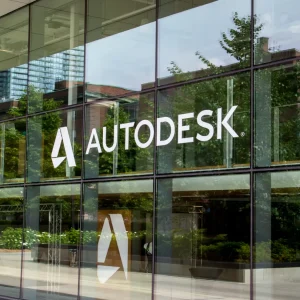
London Mayor Sadiq Khan has unveiled a new Smart Cities Roadmap that aims to improve London’s digital infrastructure.
The plan, published late yesterday, calls on the city’s 33 local authorities and public services to use harmonised data standards, supported by a new “London Office for Data Analytics” (LODA).
It also sets out plans to roll out more smart city devices, including lampposts that can monitor air quality, amid an ongoing air quality crisis in London that has seen it repeatedly breach European levels for pollutants.
“We’ve got **** Data and We Don’t Want you to Know”
“Only seven [local authorities] have a fully-featured open data portal (a platform that includes metadata, a search feature as well as the ability to download data) with each differing significantly in their structure and content,” the report emphasises.
“London’s scale – 33 local authorities, nearly 60 NHS Trusts, large regeneration opportunity areas and major public agencies like TfL and the Met serving a population of nine million citizens – presents a tremendous opportunity to ‘test-bed’ ideas”, the roadmap says.
Smart cities analyst Joe Dignan of Kintechi said one reason some local authorities don’t want to make their data public is that it is poor quality – but they have been modelling off it for decades.
He told Computer Business Review: “It’s case of ‘we’ve got **** data and we don’t want you to know.”
New data office LODA, which was developed during a 2016-2017 pilot, has now won £365,000 funding and can be formally launched, the report adds.
It will introduce new data sharing arrangements and hold “City Data Sprints” to develop use cases, as well as working to aid standardised identification of various locations, objects, data types and sensors across the city.
Engagement
The roadmap’s first mission is to improve engagement and interaction with London’s citizens. One key aspect highlighted in this stage is the development of common standards and a Local Government Digital Services Standard.
Smart cities analyst Joe Dignan of Kintechi notes that understanding users’ experience is key. He told Computer Business Review: “Up till now people have just gone for the IT infrastructure and then they try to work out what people are going to do afterwards. The IT part is plumbing and it is the simplest part of the whole experience.’’
Commentating on an unnamed city he was working with to improve their smart approach, he said he was told: “We’ve got £16 million worth of fibre here, we don’t know who is using it or what difference it is making…’’
To improve citizen engagement, authorities could build on schemes such as the MiWifi pilot which took place in Deptford Library in Lewisham, the report suggests. The 2017 pilot loaned tablets out for four weeks, with six hours of digital training. This was done to help tackle high levels of digital exclusion.
The Mayor will also put £4 million into Crowdfund London by 2022 – a hub that funds community projects.
Boost Connectivity
A main aspect of improving digital infrastructure in the plan is the roll out of 4G to the London Underground, as reported by Computer Business Review this week.
In the announcement Sadiq Khan stated that he would be: ‘’working with Transport for London (TfL) and councils to roll out 4G using public buildings and existing physical infrastructure, and supporting bids for government funding to test 5G connectivity’’
GovWifi or public city Wifi gets a short honourable mention, but no actual plans are laid out in the roadmap.
Martin Woolley, Developer Relations Manager, EMEA at Bluetooth SIG told Computer Business Review: “Looking at the plans, pollution sensors in lamp posts could be broadcasting data using Bluetooth and a unique ID. Citizens passing by could be receiving those readings via a “Smart City London app” that they installed and the data then being transmitted to the cloud for recording and analysis. This could produce a cost effective, city-wide pollution map and advice for citizens.”
He added: “On top of this, we will see beacons being used to help people find their way around larger, more complicated buildings or underground where there’s no GPS signal. In addition, there will be a rise in proximity applications, where being near to something triggers an action like the simple display of information about where you are. This will help make our cities more accessible and engaging.”
Smart Infrastructure, but…
While the map says policy makers are exploring smart city infrastructure when it comes time to replace old benches and shelters, only lamppost are given as a real example.
The lampposts, which are part of the European Horizon 2020 Sharing Cities programme, will see London and four other European cities have smart lampposts installed which will have the capability to monitor air quality, dispense public Wi-Fi and contain electric vehicle charge points.
The main issues with plans and roadmaps that are rolled out by political entities are that they sometimes become little more than just a PR exercise. To see real change and planning you need to set up a special purpose vehicle that is outside of the political election process.
‘’You can’t do a smart city in four years,’’ points out Joe Dignan: ‘’The election cycle doesn’t fit things like smart cities. So you have a four year election cycle, that’s always been the biggest barrier to continuity of plans to do this.’’
When we look at cities that are recognised for embracing the smart city approach, we look to Vienna or in the UK Peterborough which was awarded Smart City of the year 2016. The reason they have managed to foster a smart city environment is that: ‘’They created special purpose vehicles that sit outside the election cycle,’’ believes Joe Dignan.






